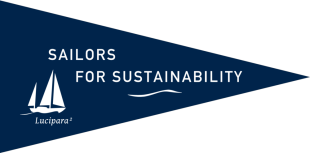Celebrating Traditional Values
When we check the weather forecast, we are happy to learn that it stays calm. It means that our anchorage will stay protected and we can witness the start of the annual Tapati festival. It’s the most important event of the year celebrating folklore, music, dance, and sports. We are eager to see as much of the many manifestations as we can. At the traditional triathlon, scarcely clothed participants compete with the elements. They paddle on straw “boats”, run with bananas around their shoulders, and swim with traditional surfboards. Elsewhere, participants show off their handicraft skills. They weave hats, make paper and necklaces, and draw ancient symbols. The evenings offer music and dance performances, both modern and traditional. A very festive vibe hangs in the air and it’s impressive to see how much the event embraces traditional values and strengthens the connections within the community. At the same time, large posters and information stands at the festival grounds remind visitors of important issues like waste management, sustainable transport, the protection of the ocean, and climate disruption.
The Future Is Up to All of Us!
The islanders’ ancestors personally experienced that the survival of human civilization depends on mutual cooperation and healthy ecosystems. At the same time, they proved to be resourceful and able to adapt. Easter Island nowadays shows that the road to a more sustainable society is not easy, with the growing tourism sector and consumer society putting a heavy burden on the islanders’ self-reliance and natural resources. Nevertheless, meeting sustainability frontrunners that are inspired by the spirit of their ancestors, and seeing so many sustainable initiatives, strengthens our conviction that the community is making progress towards a sustainable future. It means that our future is not written in stone, but depends on our own behaviour. It is up to us to apply positive, workable models and to make smart, sustainable choices in which both nature and humans thrive. That is, we think, Easter Island’s most important lesson.



